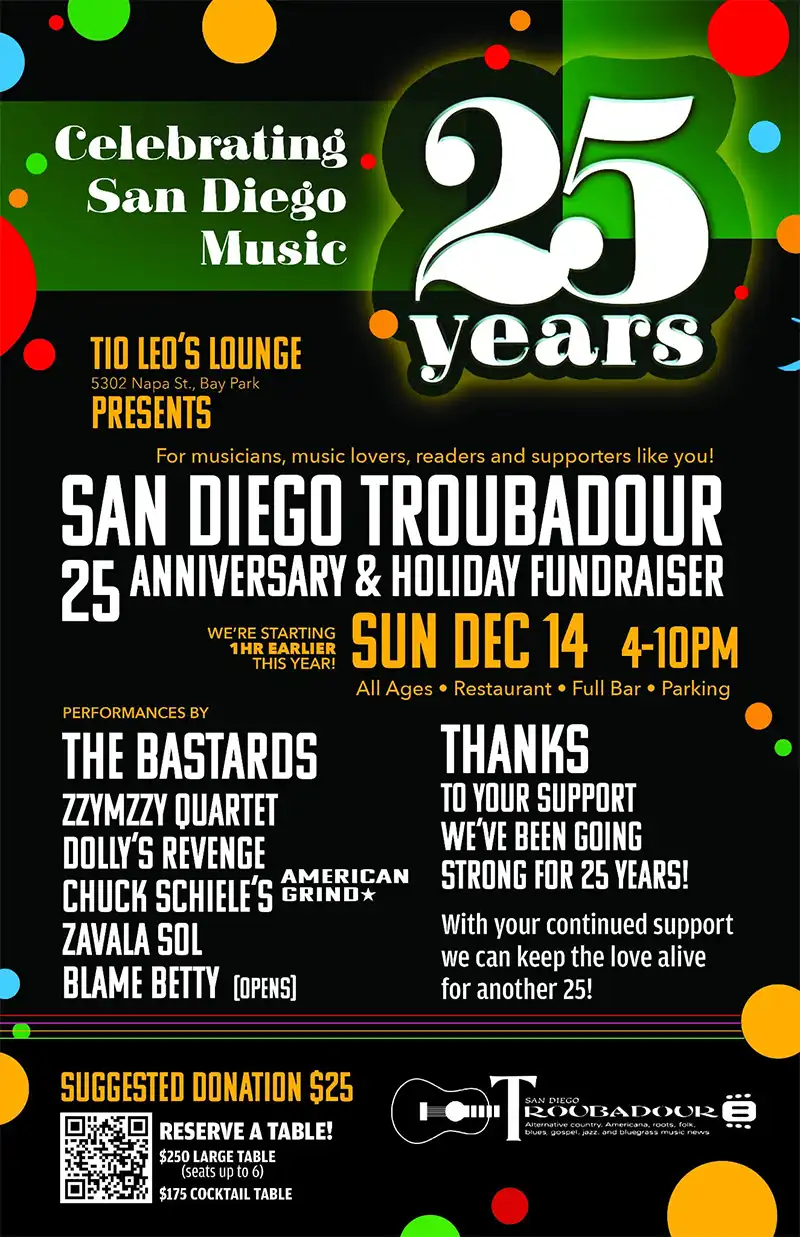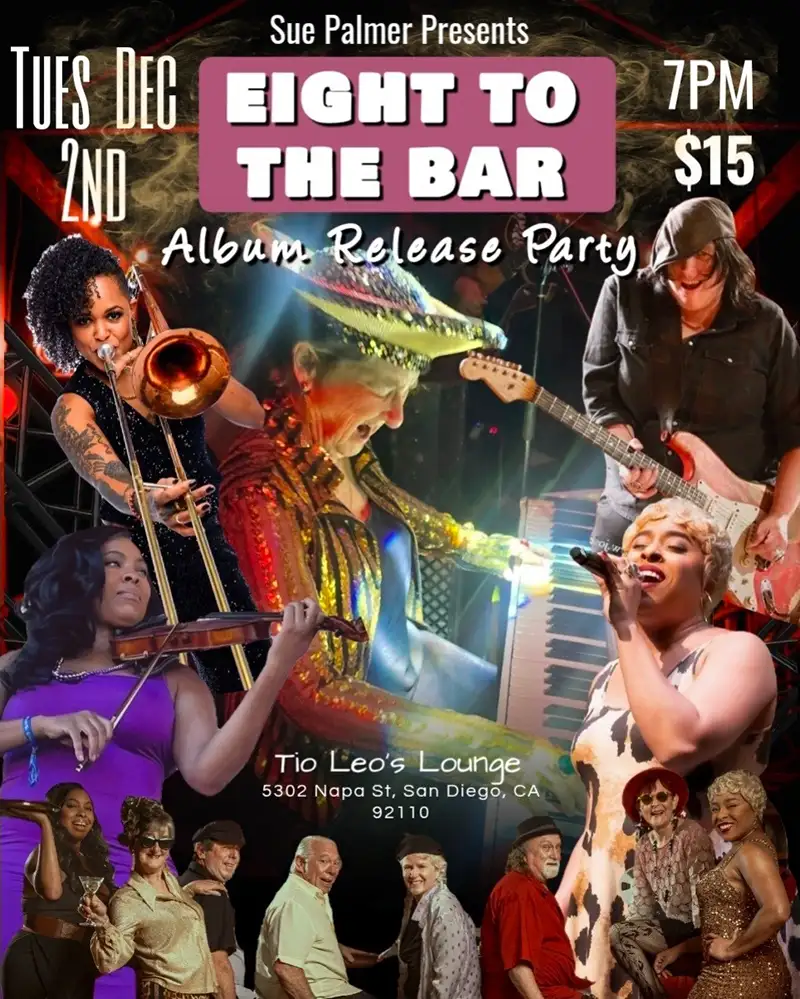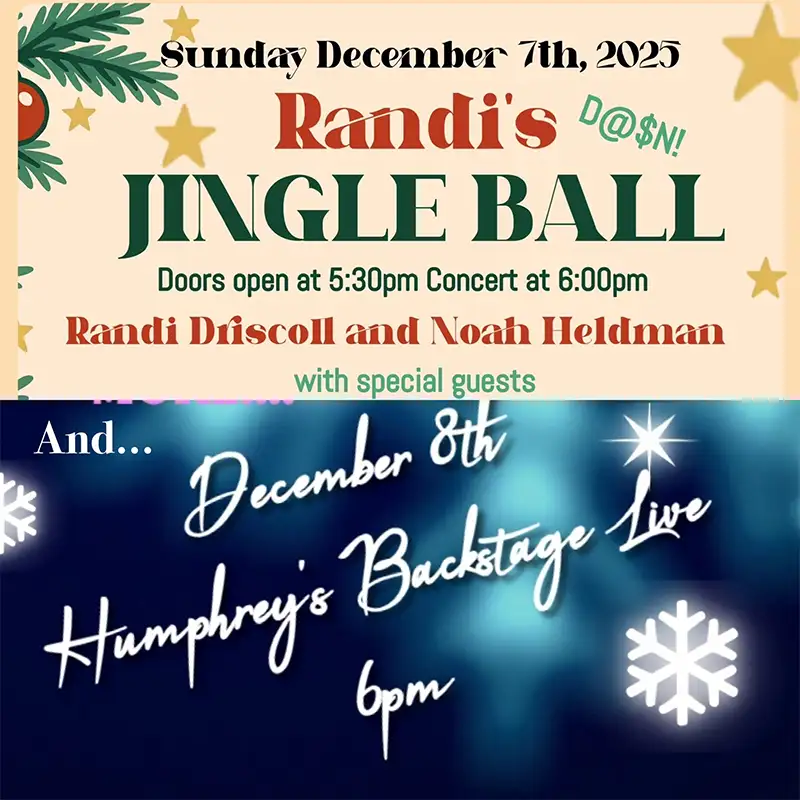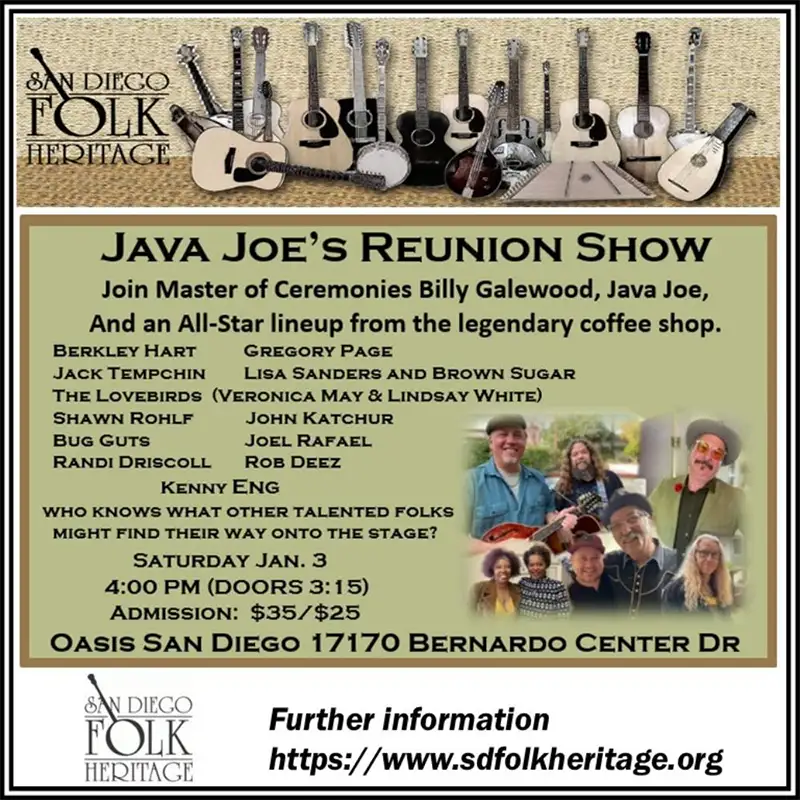Featured Stories
A Chat with John Jorgenson
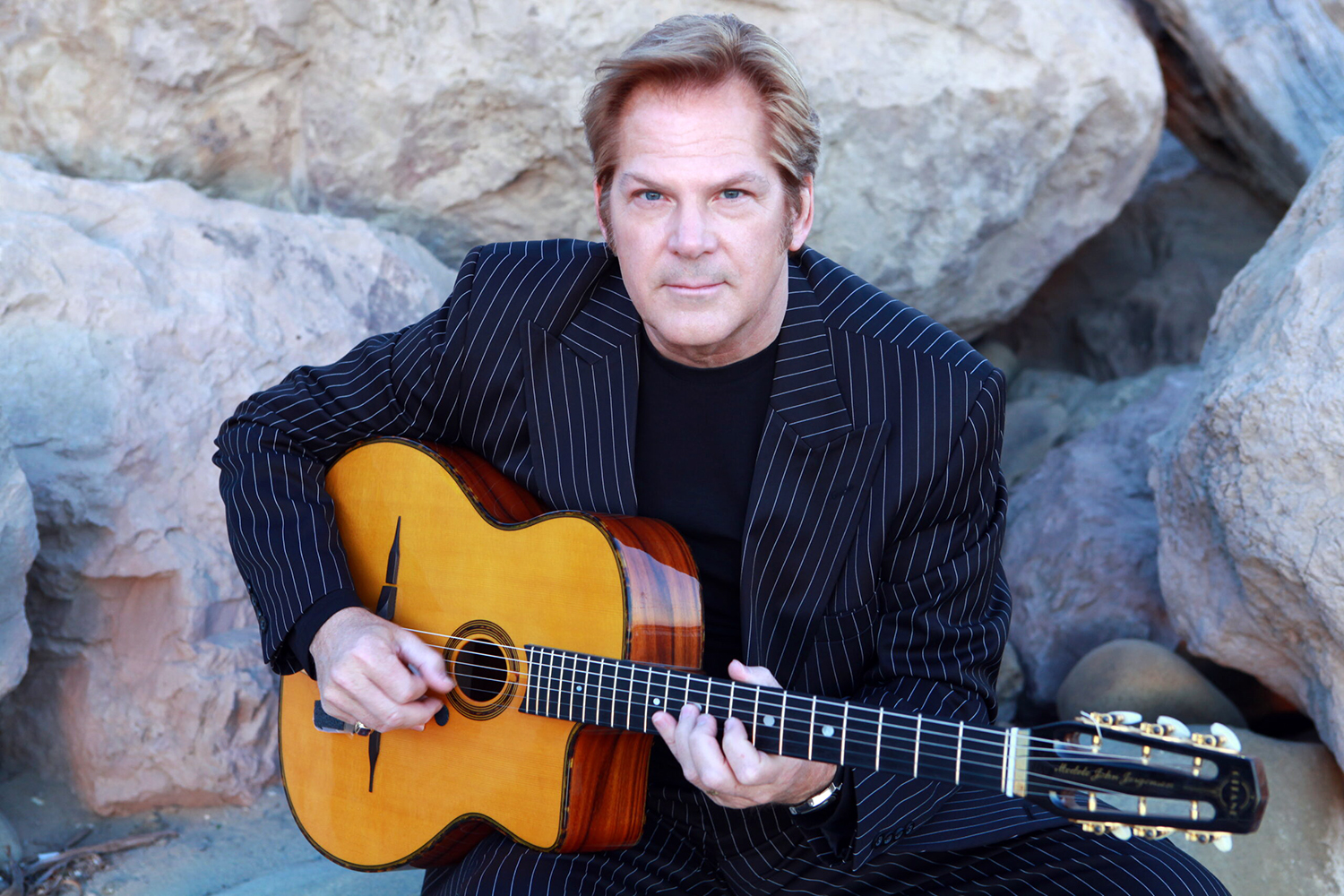
John Jorgenson
Those who attend the John Jorgenson Quintet’s April 6 show in Fallbrook will hear some wonderful, world-class Gypsy jazz. They won’t hear any bluegrass, country-rock, classical, folk, hard rock, alternative, or blues. But according to Jorgenson, the music they hear will all be influenced by those styles, and more.
Jorgenson is possessed of a restless versatility that sets him apart from most everyone else in the music business. To wit: while he is an in-demand guitarist by everyone from Elton John to Barbra Streisand, he earned his bachelor’s degree from the University of Redlands, majoring in woodwinds, namely the clarinet, saxophone, and bassoon. And Jorgenson still plays clarinet in addition to guitar in his gypsy jazz outfit. He also plays saxophone, mandolin, bouzouki, piano, and bass. And that’s only one small part of his portfolio.
His website’s calendar lists shows not only for the Gypsy-jazz John Jorgenson Quintet but also the John Jorgenson Bluegrass Band, the hard-rocking John Jorgenson Electric Band, an alternative rock trio with drummer Dennis Diken and bassist Mike Mesaros from the Smithereens, and a folk-country trio with Mary Hooker and Harry Stinson.
Previously, he was a founding member of the country-rock outfit the Desert Rose Band and also the surf/roots combo the Hellecasters. That’s a lot of stylistic territory to cover.
That stylistic restlessness has marked his entire career. While in college, he worked at Disneyland in a quartet that would move from one area of Disneyland to another, changing costumes, instruments, and musical styles: Dixieland jazz on Main Street (clarinet), bluegrass in Critter Country (mandolin), and swing music in New Orleans Square (guitar).
“It was the same four people and we had three different sets of costumes,” Jorgenson recalled in a telephone interview as he prepared for a recent show in Pittsburgh.
But he said his diverse taste in music—and in performing a broad range of music—predates even his Disneyland gig.
“I started on piano and was studying classical, but I also played by ear the stuff I liked: television show themes like F Troop, Batman, and The Addams Family. When I started playing guitar, I’d have garage bands with my friends, so I’d play rock. That same day, I’d be doing an orchestra rehearsal or jazz. For me, it was all good music, so I didn’t care what style I was playing as long as I was playing good music.
“It’s been a continuum my whole life. I think it’s really good, because if you’re more well-rounded and listen to more styles, you can have more to draw on emotionally and harmonically, in your skill set. Even though I try to keep the styles separate, I don’t try to play bluegrass in a jazz situation. For example, the musicality of each style crosses over: dynamics, intensity, precision, rhythm; all those things are the same no matter what the overall style is. One style can’t help but support playing well in the other styles.”
Jorgenson said he realized he was different from other musicians he worked with when he was trying to come up with a list of potential backups to have on hand to cover for him if needed and was drawing a blank.
“It sounds kind of corny, but I was thinking of what if I get sick? Who could I get to fill in for me? And I couldn’t think of anyone who could fill in for me! I’ve realized that I’m kind of a unicorn.”
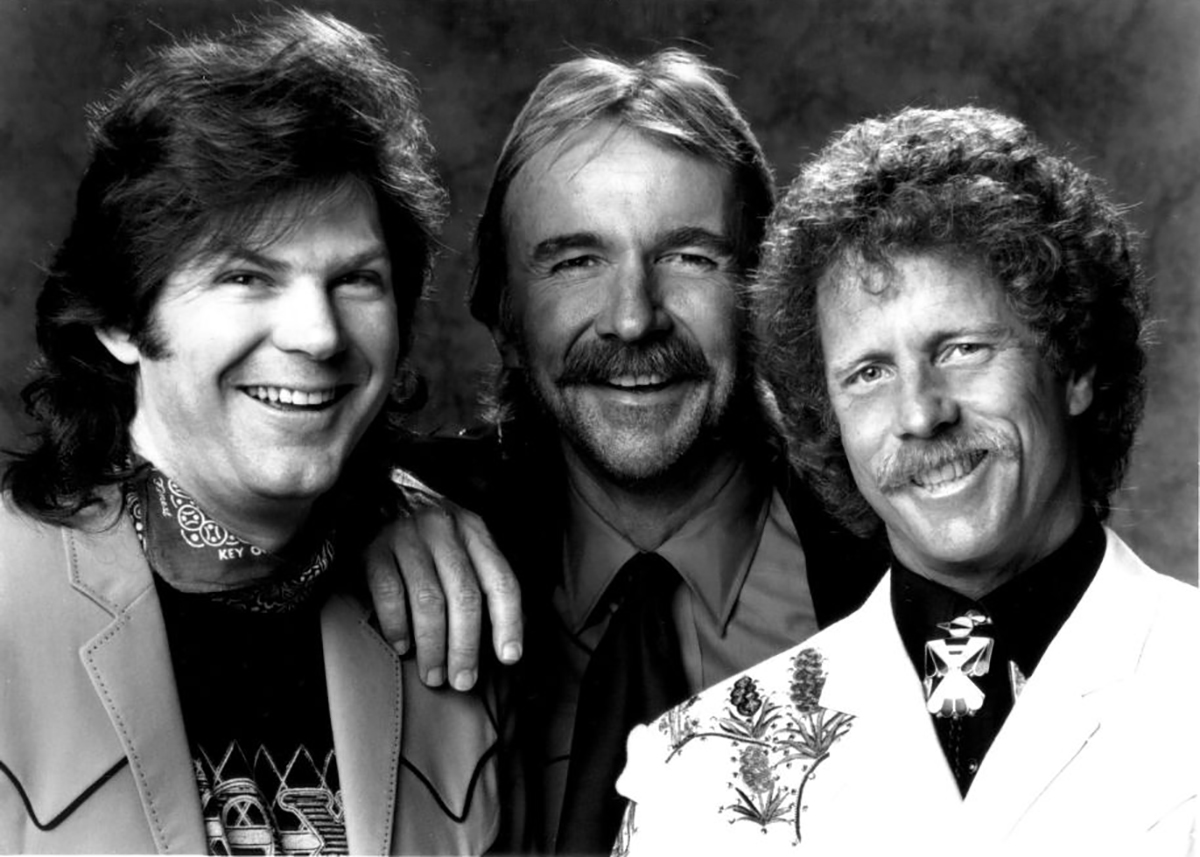
The Desert Rose Band (Jorgenson, Herb Pedersen, Chris Hillman)
When pressed, Jorgenson agreed that Mark O’Connor, a former Fallbrook resident, plays bluegrass, gypsy jazz, and classical but added that O’Connor mostly sticks to fiddle. He offered up Ricky Skaggs as someone who plays guitar, standup bass, mandolin, and piano but added that he sticks to bluegrass.
Asked if there is anyone he has yet to play with that he’d like to, he listed trumpeter Wynton Marsalis, who famously won Grammys in both classical and jazz in the early 1980s.
“I would love to play with Wynton! I’ve never met him. I played with his younger brother, Jason. We did a special concert at the Musical Instrument Museum in Phoenix, and I got to play Charlie Christian’s guitar. It was amazing! And Jason was on vibes, and he was great.”
As far as getting to play a historic instrument like that, Jorgenson said it was a bit intimidating.
“It’s a museum piece: they bring it out with white gloves, and then I’m supposed to play it like it’s a regular instrument.”
Born in Madison, Wisconsin, Jorgenson’s parents moved the family to Redlands when he was one year old. His father was an orchestral conductor and music professor, and his mother gave piano lessons. Jorgenson said his mother was his first music teacher, which had both pluses and minuses.
“I saw every kid in our neighborhood come to our house to play piano. And as a little kid, I noticed they were getting attention from my mom!”
While the young Jorgenson enjoyed the attention he received from his mom during his lessons, he said living with your teacher put extra pressure on practicing.
“The only trouble with your mom as a piano teacher is that you can’t practice without her listening.”
In third grade, he added clarinet to his repertoire.
“My sister is two and half years older, and at that time, in fifth grade, you choose a band instrument to play. I was jealous that she got two instruments, and I only got one, so I chose the clarinet
“She played the flute… and still plays it to this day, in a semiprofessional ensemble in Hawaii.”
A year after he picked up clarinet, he also picked up a younger brother.
“He ended up playing the French horn and was a symphonic player for a number of years. I was kind of the only one of us that had a full-on career in music.”
Guitar, and the other stringed instruments like mandolin that followed, came about in the early teenage years.
“After playing piano for eight years or so, I got really interested in guitar.”
It was the guitar that led to his first paying gig, and the dream of a career playing music.
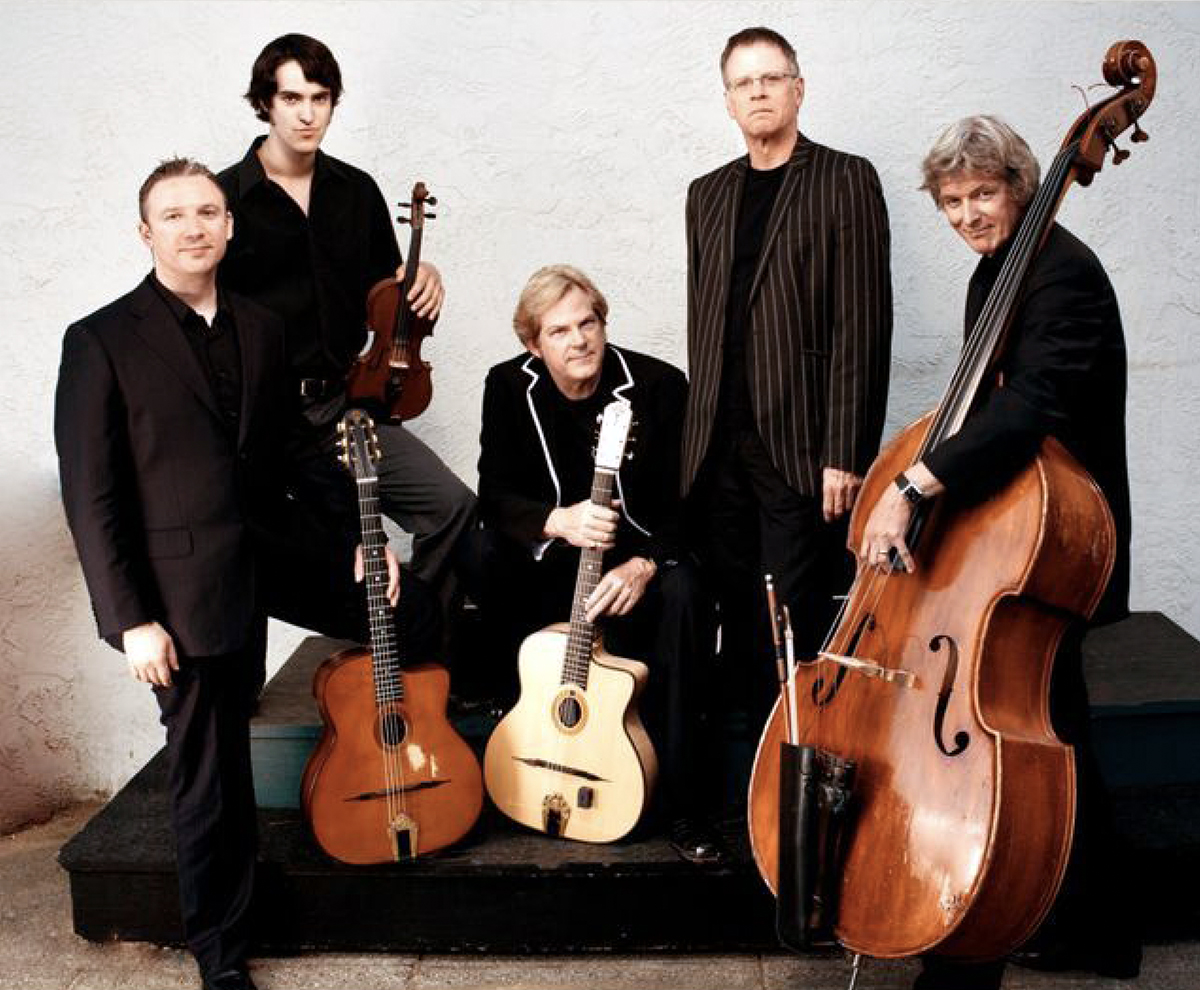
Jorgenson’s Gypsy Jazz Quintet.
“When I was 13 and 14, I made some money; I made like $25 playing at church—and I used that money to buy a wah-wah pedal, so I thought, ‘You know, this is kind of good.’ I just really knew that is what I wanted to do and I would do whatever it took to make it work. Over the years, that’s meant playing in every kind of band, in commercials, playing music maybe I didn’t choose. All of it has allowed me to make a living playing music. Most of it has been playing music I want to play.”
One of his earliest bands was called Rockin’ Pneumonia after Johnny Rivers’ 1972 hit cover of the Huey Smith song.
“Funnily enough, we didn’t even play that song! We just thought it would be a good name for a band. We just had a reunion at my high school reunion: 50 years! All the guys still play and were healthy!”
With both parents having a background in music, Jorgenson said they were supportive of his musical ambitions but worried about the financial side of the business.
“It’s amazing that they bought me my first instruments, which were not the really good ones—I had to buy those myself—but they got me my first clarient, electric guitar, and bass. As I wanted better instruments, I learned that I had to earn the money for them. That was good for me, because I appreciated the work ethic. They drove me to auditions, gigs, and everywhere until I got my driver’s license. They were very supportive. They were also apprehensive; they wanted me to go into music education rather than life as a performer. That wasn’t in the stars for me. I didn’t want to be a music educator.”
(When it was pointed out that just a few minutes earlier, Jorgenson had said he’d been giving some private lessons not too long ago, he laughed and said, “I think they’d be happy about that!”)
“When I got the steady job at Disnelyand, they felt good about that because I had insurance. When I left that job, they were nervous about that. When the Desert Rose Band started appearing on television, that legitimized it for them, and they stopped worrying at that point.”
The Disneyland job was a natural for Jorgenson, having gone there as a kid many times to see the concerts at the old Carnation Plaza stage.
“My dad used to take me there when I was young. I saw Count Basie with Freddie Green, Woody Herman, and Stan Kenton a number of times. I remember seeing Peter Erskine playing drums, probably with Kenton. I saw Cab Calloway—and I got to sit with him between shows and just talk to him for half an hour.
“That Carnation Plaza was a great place for jazz!”
Much as with his band Rockin’ Pneumonia, Jorgenson is still in touch with the other members of that Disneyland quartet all these decades later.
“We’re still friends. I don’t see them as often as I’d like to. One of them— Dick Hardwick—became a professional comedian. The others are still performing. Some are still in Orange County even. I feel really lucky that most of the people that I’ve been in bands with I’m still in contact and friendly with. There’s very little drama in my past. Gerald Albright, an excellent saxophone player who’s had a great career, played with me in a band together in college and we’re still in touch.”
Jorgenson said that now that he has grandchildren, he thinks he might be the “cool” grandfather.
“My granddaughter plays bass, and her boyrfiend plays guitar and is obsessed with pedals. He was surprised to see the real vintage fuzz and wah-wah pedals that I’ve had since I was 14. I can’t imagine ever going to my grandfather’s hosue and plugging in a bunch of different fuzz pedals!”
As to just how many instruments he has at his home in Ventura County, Jorgenson himself seemed a bit stumped.
“A lot! A lot of guitars and amps, then there are also clarinets and saxophones, mandolins, Dobros, and keyboards. It’s kind of crazy.”
For his gypsy jazz gigs, he said he plays a standard B-flat clarinet.
“I do play it when I do shows with my quintet, so I’ll be playing it there in Fallbrook this month for sure. And people love it—I’m surprised more people don’t play it. The trends just change, and people don’t play it.”
Of his quintet, Jorgenson said, “It’s a set of very highly skilled musicians. Much of the music I’ve composed is very unique. I will be playing guitar, bouzouki, and clarinet, and singing. We have another guitar, accordion, bass, and percussion. Nearly every song has a different instrumentation.”
Jorgenson was asked if it’s difficult to find players who can double on a second instrument.
“It’s not easy to find musicians who are good on even the one instrument! This guy, Rory Hoffman, is very interesting. He’s blind, yet he plays even more instruments than I do! But he can’t bring them all because we can only fit so many instruments in our vehicle. It’s fun to work with people who are versatile.”
Jorgenson said his songwriting process is more inspiration than perspiration.
“I don’t feel like I have to write songs. So, I usually wait until there’s inspiration, and that often comes in the form of a personal experience. Or if I need something, if I need to finish an album, that kind of motivates me, too. Even though I’ve composed a lot over my life, and recorded a lot of my own compositions; I don’t feel the pressure to just churn out songs.”
Given that he plays a wide variety of instruments on a regular basis, one might wonder if Jorgenson spends all his spare time woodshedding.
“I’d be lying to say I practice every day. I end up playing almost every day; whether it’s actually mindful practicing is another story. I just did eight shows in five days at Birdland, and the three days before that, I was teaching every day. I do end up playing nearly every day, not so much on piano or reeds. I’ll practice those if I need to play something particular. Sometimes I play the piano for my own enjoyment.”
I asked Jorgenson to comment on some other prominent guitairsts, and the conversation comes back to his quintet project and the Gypsy jazz he so loves.
“To my ears, Jeff Beck certainly is one of the most inspiring electric guitar players, for sure. But they were all inspired by Django Reinhardt to begin with—he set the bar higher than anyone had ever set! Jeff Beck was a huge fan of Charlie Christian, Chet Atkins, and Mark Knopfler. Clarence White was a big fan. [Reinhardt’s] tentacles extend into every style of guitar.”
Jorgenson was asked about a YouTube video he made, showing how Reinhardt only had the use of two fingers on his left hand, and how that greatly influenced how he played.
“He was already an amazingly proficient guitarist when he had that accident. When he was 18, his hand got burned. Most of his family and friends thought he’s never going to play again. He ended up re-learning. To my understanding, that music was in his mind, so he was going to learn how to play it with the fingers he had available. It wasn’t a question of not going to play.”
In looking at his own still unfolding career, Jorgenson said, “I’m grateful that people want to hear me play, and grateful that I can take them on a little journey out of their everyday lives.
“I’m happy to be bringing this particular group to Fallbrook. I grew up in Southern California, so it always makes me happy to play around the different areas where I played growing up.”
John Jorgenson Quintet, Sunday, April 6 at 2pm.
Bob Burton Center for the Performing Arts
2400 S. Stage Coach Lane, Fallbrook
$20 for adults; $25 day of show; children 18 and under are free. For tickets, go to www.fallbrookmusicsociety.org


